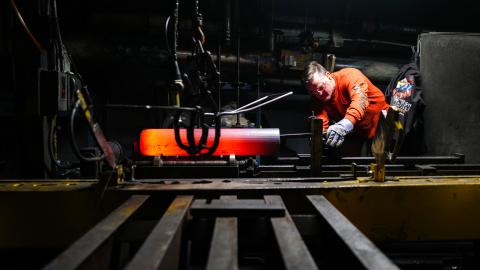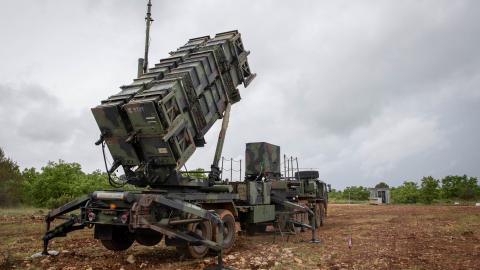The nation is beset by a swift-moving chain of controversies linked by national security. Politicians’ arguments over events in Benghazi are drowned out by concern over the care for veterans, which in turn is eclipsed by charges and retorts over the release of a US soldier from captivity in Afghanistan.
Obscured by the current political scrambles are some strategic issues that transcend political maneuvering and, if left unresolved, have unconsidered and profound consequences for the nation’s security.
Among these is the future of the Tomahawk land attack missile (TLAM) that Navy ships have used with unfailingly impressive results since 1990’s Desert Storm operation.
Launched from warships, the missile is boosted with a rocket motor that is quickly relieved by an air-breathing jet engine that propels the missile and its 1,000-pound warhead about 800 miles.
The Navy has used the missile to strike nodes of the Iraqi command-and-control system; in operations against the rogue Yugoslavian government during the Balkan Wars of the 1990s; in response to al-Qaida’s 1998 bomb attacks against American embassies in Tanzania and Kenya; against Taliban targets in 2001; and most recently in 2011 against Libyan targets whose destruction helped hasten the end of Libyan dictator Moammar Gadhafi.
The weapon combines accuracy, range, lethality, mobility (as part of the weaponry on naval vessels), defenses against being jammed, relatively low cost, and is simple to fix and change its targets.
Against this record, the Defense Department demurred when the Navy asked for an additional 980 TLAMs to increase its inventory of the most up-to-date model. Not only was the request denied, the decision was taken to end production of the Tomahawk in fiscal 2016. No more orders for the missile would be placed after the autumn of 2015.
The termination followed a December DoD decision to cut the number of TLAMs to be ordered from 4,900 to 3,700. No strategic justification was offered to account for the reduction.
Where does this leave the US? The opening salvo of Operation Iraqi Freedom, in 2003, expended well over 800 TLAMs. Twelve years earlier, 250 missiles were fired during Operation Desert Storm. Including operations in Kosovo and the 1998 strike against Iraqi sites suspected of developing weapons of mass destruction, the average use of the weapon rounds out at something between 100 and 200 per year.
The 1,000 older models (called Block 3) that remain in inventory are neither being maintained nor serviced. Their usefulness as weapons in combat will expire in six years.
The current Block 4 model, which features improved navigation, anti-jamming and retargeting systems, began to be delivered 10 years ago. It should be capable of performing combat missions for 30 years if properly maintained, including a recertification at the midpoint of its service life. The midpoint for the first Block 4 Tomahawks will occur in 2019.
But if, as the Defense Department now plans, no more missiles will be ordered after fiscal 2015, the technicians, engineers and contractors who must recertify the missiles will have long since vacated to find other work.
Who will guarantee that Tomahawks already delivered get the tune-up they need to remain useful weapons in the US seapower arsenal? And what will become of the 165 secondary and tertiary contractors that employ a skilled workforce of 1,100 men and women in 29 states to produce, service and maintain the Block 4 missiles?
The answer is bleak. If Congress does not reverse the Obama administration decision — the House Armed Services Committee has already voted to continue building Tomahawks and the Senate Armed Services Committee followed suit on June 4, but additional congressional action is needed — the people and skills required to produce them will go elsewhere. If unanticipated events require the original number of missiles, the Navy will be unready. Discontinuing production of the Tomahawk is an exercise in self-scalping.
President Obama’s first secretary of defense, Robert Gates, noted in an April 2014 interview in the US military’s Stars and Stripes, “when it comes to predicting where and how we’re going to use military force next over the last 40 years since Vietnam, we have a perfect record: We haven’t gotten it right once.”
Gates added, “you can’t just predict these things [i.e. the use of force], and we need to recognize our inability to predict them.”
Gates was not talking about theoretical recognitions. He meant being prepared. Maintaining the Tomahawks that exist in the US arsenal and restoring the number that the military had planned to purchase would be a large step toward greater security in an increasingly troubled and unpredictable world.
















